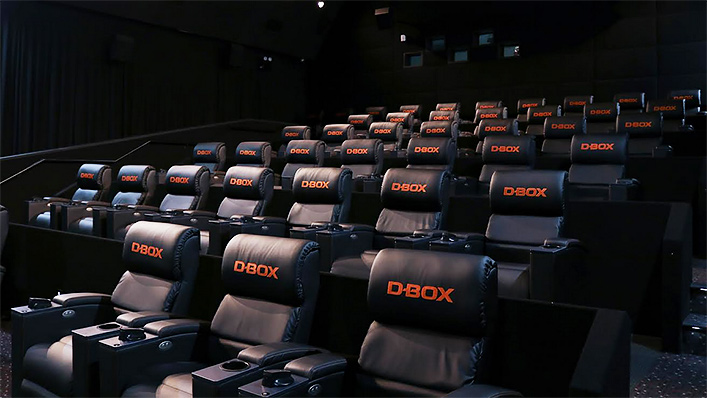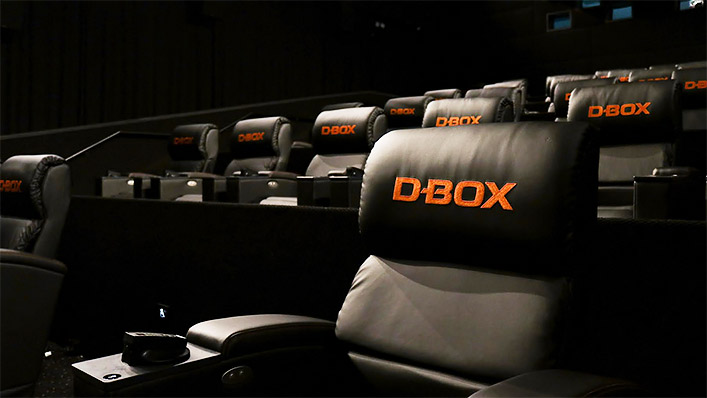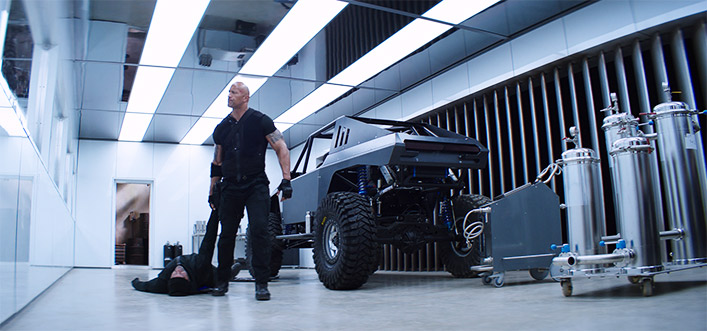I watched Hobbs & Shaw while an ‘immersive’ seat vibrated my butt. This is my story

Hoyts has introduced D-BOX technology to select cinemas in Australia. Described as the “next dimension of your cinematic experience,” D-BOX seats are motion recliner seats that move in accordance with what appears on screen. Luke Buckmaster took one for a spin.
Immersive. Immersive. Immersive. It’s an interesting word, bandied about a lot in entertainment and film-viewing circles. But what does it actually mean? Some sound aficionado reckon true immersivity involves binaural and multi-channel audio. Others say it can fulfill their hunger – through dining experiences combining kitchens with theatrical sets. The more technically minded argue immersive qualities involve “hologram visualizations of 3D scatterplots,” whatever that means.
The “I” word is also popular in virtual reality circles, often used in conjunction with futuristic turns of phrase such as “plasticity of consciousness.” But maybe we’re all just overthinking it. Maybe real, true-blue immersivity can involve something as simple as sitting on a vibrating seat. Maybe cutting edge immersive entertainment is all about gyrating butts.
This is the perspective, it seems, of proponents of D-BOX technology. This strangely visceral addition to cinemas has been rolled out in a small number of Hoyts theatres in Australia (in Northland, Highpoint and Wetherill Park). It’s been described by the cinema chain as “state-of-the-art immersive motion recliner seats” that enable viewers to “feel it all.”
I felt it all, as it were, by attending a D-BOX-equipped screening of the Fast & Furious spin-off movie Hobbs & Shaw. I was warned by a staff member, prior to the movie commencing, not to leave anything on the armrest, lest it fly off mid-screening. In my mind I saw visions of popcorn morsels flying through the air, like tennis balls shot out of a ball machine, raining fire on the audience.

The first rumble from the seat occurred when the Universal logo was displayed pre-film; just a small tingle to let us know it was there. Longer and steadier rumbles arrived paired to the sight of a helicopter, and a motorbike, leading up to the first action sequence. This sequence involves Idris Elba playing a badass called Brixton Lore, who has cyber implants that give him super powers. Hattie Shaw (Vanessa Kirby) is an M16 agent – also very much a badass – who is the sole survivor of a group of agents that Elba crushes like the proverbial paper cup, then frames her for the murder of her colleagues.
There are all kinds of fisticuffs in these early moments: punches, bodies being flung around like rag dolls, that sort of thing. The D-BOX seat goes crazy keeping up with all this motion. It’s vibrating heavily, tilting left and right, moving from side to side, bouncing and jittering in accordance with the various knocks and blows.
The plot of Hobbs & Shaw is not complicated. And yet I find it challenging to keep up with what’s going on, because I’m struck by the existential question of who I am inside this universe – existentialism not being something I anticipated experiencing on a reclining chair (then again, I was promised that I would “feel it all”). Vibrations from the seat do not discriminate between characters and situations. If the bad guy cops a punch to the face, for example, the seat vibrates. If the good guy gets hit, same thing. It’s not just human interactions either. The seat moves when a car or bike accelerates.
Is it supposed to be replicating the experience of riding on these vehicles? If so that doesn’t make much sense, given I can see the person riding on it – and that’s not me. Also, if I’m feeling when the villain gets punched and when the hero gets punched…well, I can’t be both people, right?

In any event the film is not framed from a first-person perspective. My role in this world is to watch and observe. So why am I feeling what the characters feel? And why am I feeling it in the wrong place? When somebody gets punched in the head, why do I feel that blow in my butt?
I know, I know: I’m overthinking this. Yet these questions contribute to an intense feeling of disconnect – which of course is the opposite of immersivity. That feeling of disconnect is exacerbated by the structure of the film itself. Director David Leitch extensively uses parallel cutting techniques, often removing us from the moment by alternating between the whoopass-delivering titular characters.
One second Hobbs (Dwayne Johnson) is delivering swinging fists of justice. Then – cut – it’s Shaw (Jason Statham) in a moment of violent bedlam. Then – cut – back to Hobbs to continue the same scene. Then – cut – back to Shaw, etcetera etcetera. An early split screen sequence showing the two characters going about their daily business, their duties including making breakfast and preparing to save the world, is formally shmick, but also reflective of a distancing and impersonal visual style.
When Hobbs sits down for a chat with old mate Locke (Ryan Reynolds), the pair discuss taking on a job. It’s a standard dialogue exchange but again I am having difficulty concentrating, knowing my butt could vibrate at any moment. It occurs to me that three realities are unfolding simultaneously. One is the world the characters inhabit. Another is my experience in the cinema as a viewer. And the third is whatever plain of existence this seat is on: this weird, erratic, pulsating, and, I might add, very comfortable seat, which is well-timed to the on-screen action but also feels like it has a life of its own.
The D-BOX occasionally unexpectedly vibrates, as if to say: “I’m still here, champ.” But sometimes it’s all quiet on the western front. When The Rock flexes his eyebrows, for instance, those magnificent patches of hair rising and falling with the precise and thrilling calibration of a rollercoaster carriage, I find myself disappointed that the seat didn’t express its approval by putting forward a cheeky vibration or two.
“Cheeky vibration” might be the best way to describe a notable rumble that occurs during a dialogue sequence on a plane. In this sequence Hobbs discusses with Shaw how he is quite open to the idea of impregnating Shaw’s sister.
What…is going on?! Why is the seat rumbling now? Again it makes me contemplate some weird questions. Who, or what, am I supposed to be in this scene? What am I supposed to be feeling? Why has talk of sex caused a vibration beneath my buttocks? Is the person who programmed these vibrations taking the piss?
Perhaps it’s better not to ask. Immersivity can be weird.


















